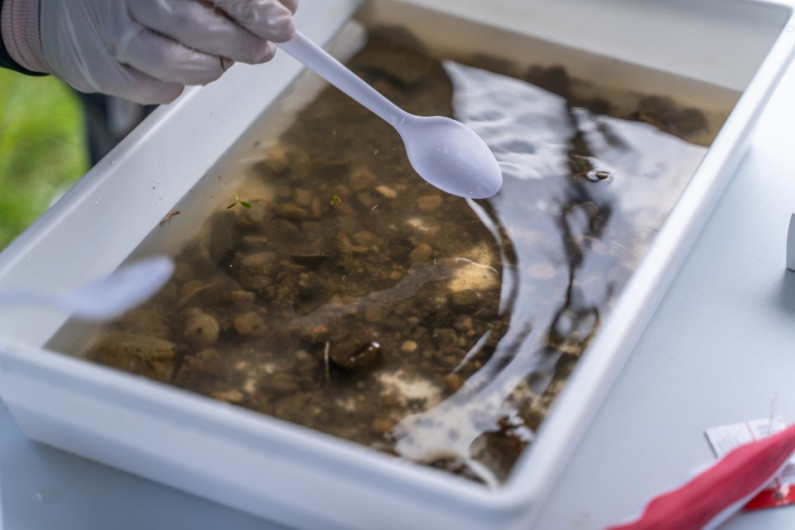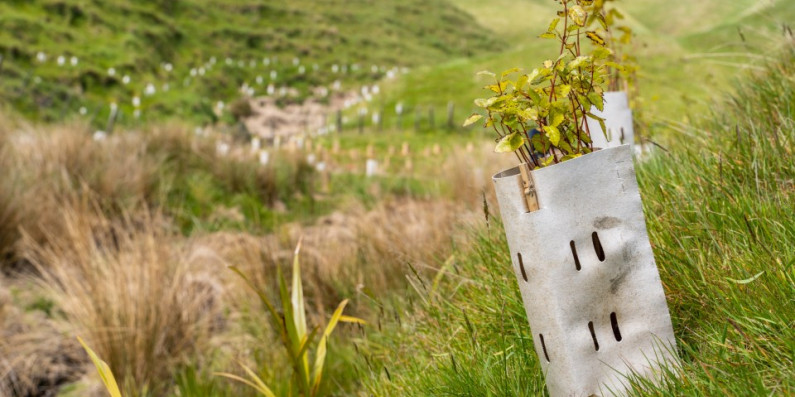
Restoring the mauri of Te Awarua-o-Porirua
A group of MfE staff took part in a day of riparian planting and water quality monitoring recently. The aim — to help restore the mauri of Te Awarua-o-Porirua.

A group of MfE staff took part in a day of riparian planting and water quality monitoring recently. The aim — to help restore the mauri of Te Awarua-o-Porirua.
The restoration project of Te Awarua-o-Porirua is a collaboration between:
It is also one of the quick-start projects supported by the Essential Freshwater Fund and Jobs for Nature programme.
"The focus of the project is about restoring the health of Porirua Harbour, which is only two kilometres away from here. At the moment, every single water quality indicator in this area is declining, most in the D-E range, which when you’re looking at a scale of A-E is not where we want to be.
We are in the Waihora catchment today, and seeing different water quality levels in the little streams we are testing, which are reflected in the results of the macroinvertebrates, nitrate and other checks we’ve been doing."
For every catchment in Porirua, we worked out the priority areas to restore. Riparian management is a core tool.
Hopefully with the water quality monitoring we are doing, we will be able to see directly the difference it's making."
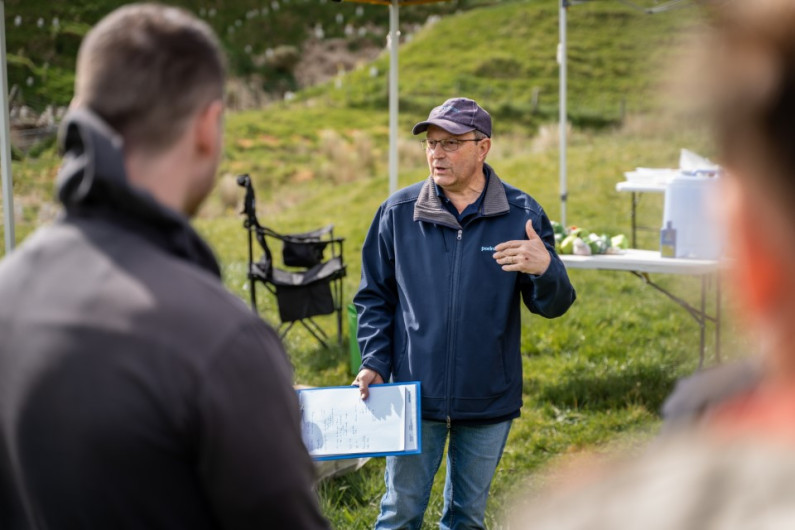
“The good thing about this site is that it’s at the top of the Porirua Stream catchment - so from here this valley feeds down through Porirua East down into Bothamley Park and the stream, which links all the way down to our harbour.
The site was only retired from grazing for cattle a few months ago. Since then, we’ve put thousands of plants in the ground. We held our first community planting event on a pretty miserable day, and even then 60 or 80 people turned up.
We had to divide the site because part of it is very steep. For that section, we helicoptered in 2,000 plants in 2 hours, which was much safer and more efficient than carrying them in. That’s the nature of doing planting in Wellington, lots of steep sites, difficult access and challenging weather!”
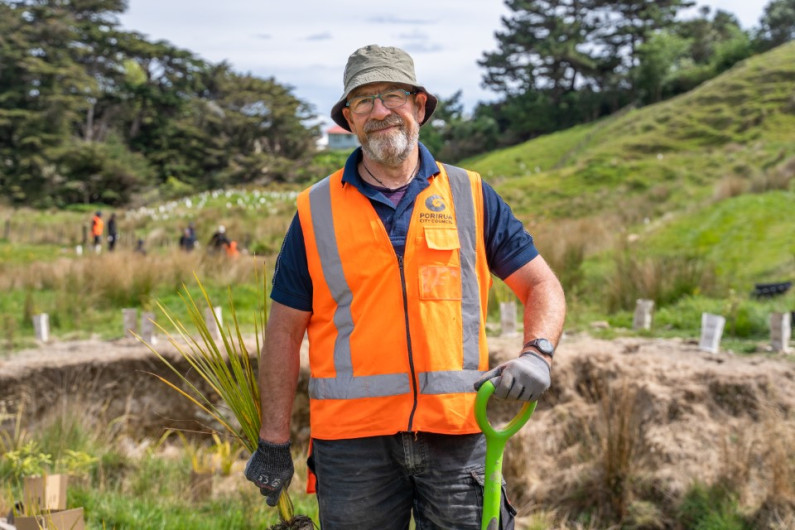
"It’s great to go from being behind a desk with all the numbers to seeing the projects on the ground.
Right now I’m planting tī kouka, which apparently are a favourite snack for rabbits! We are protecting them with some biodegradable shields and some wool pads to keep out the weeds. I’m based down in Christchurch and have done tree planting before with my hiking club in North Canterbury, putting in trees around the rivers. For me, it’s all about making that connection between policy and project.”
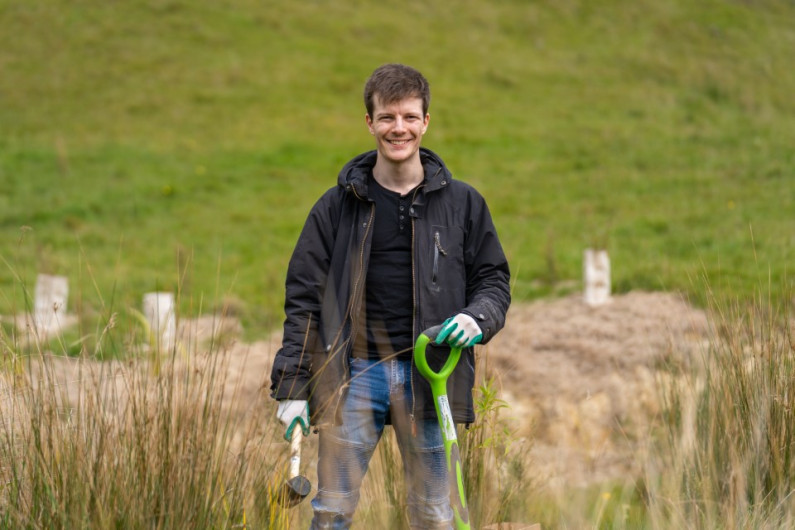
“In my role in the Community Investments Team, I administer Jobs for Nature funding to projects in Waikato, Manawatū, Tasman, Canterbury and Southland.
Today, we did water quality sampling where we tested for phosphates, nitrates and macroinvertebrates.
We had quite different readings from sites that were maybe only twenty metres apart. The site I was testing had the highest number and most diverse array of macroinvertebrates. This is the spot where stock had been retired from grazing the longest, which makes sense.
We identified crane fly larvae, mayflies and dobsonfly larvae which are all good for streams whereas snails aren’t so great. Essentially, the higher the levels of diversity the better.”
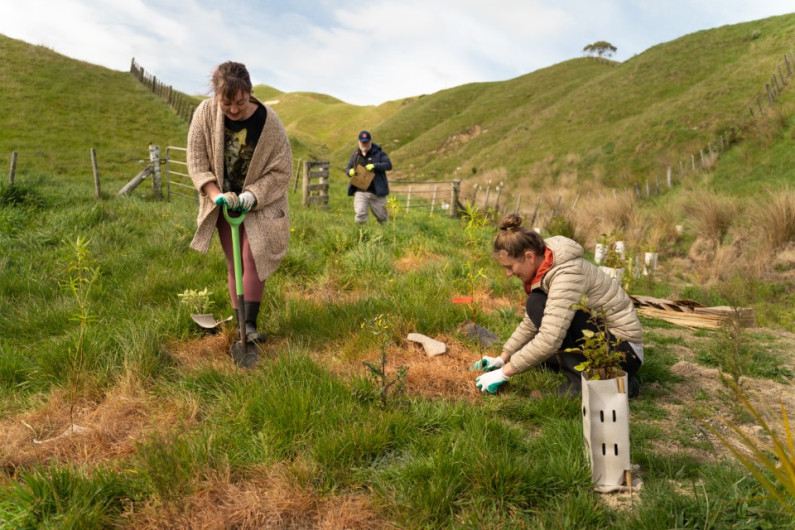
"I was doing the water quality monitoring, helping with the nitrate and phosphate testing. We often think about water quality at a high level, so it’s fascinating to be able to see how they do it, and so cool to see everyone so enthusiastic and engaged today.”
